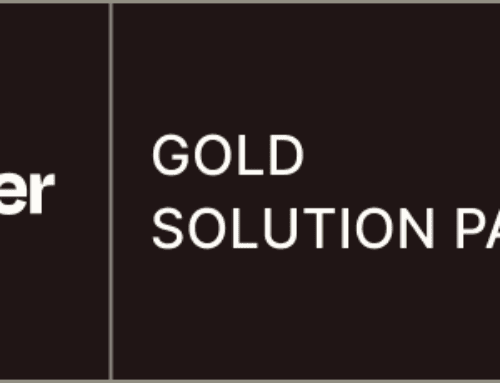How to Efficiently Track Miro Widgets in Google Sheets
Introduction to Miro and Google Sheets
Miro is a fantastic tool for teams looking to collaborate easily and visually. Imagine being able to brainstorm ideas on a digital whiteboard even when your team is scattered around the world. It’s like having an unlimited canvas that you can access anywhere. In contrast, Google Sheets is like your digital notebook where you can keep all your data organized and accessible. It’s perfect for anyone who loves lists, charts, and everything in between.
But did you know you could combine Miro’s dynamic visual tools with the organizational power of Google Sheets? Yes, that’s right! You can harness the creative elements of Miro and systematically arrange them in Google Sheets, bringing structure to creativity. This unique blend allows you to stay on top of all the exciting things happening in your projects.
The Need to Track Miro Widgets
Why would anyone want to track Miro widgets? Well, if you use Miro frequently, you’ll know that it can quickly become a bustling hive of activity. As more widgets are created—each representing new ideas, tasks, or goals—it becomes increasingly challenging to manage them all efficiently. Keeping track of these widgets ensures that none of your team’s brilliant ideas fall through the cracks.
Moreover, tracking widgets helps in prioritizing tasks and identifying trends over time. Think about it: all those widgets are pieces of a puzzle. When they’re carefully documented somewhere like Google Sheets, you can start to see the bigger picture. Organizing widgets translates to better project management and allows teams to focus on what truly matters.
Setting Up the Integration
Integrating Miro with Google Sheets may sound like rocket science, but it’s simpler than you think! The first step involves accessing integration platforms like Make.com, which streamline the connection process. These platforms act like digital translators, helping two different software applications talk to each other seamlessly.
Once you’re on the platform, follow the setup wizard that provides clear-cut instructions on linking Miro to Google Sheets. It’s like setting up a new phone; just allow a few permissions here and there, and before you know it, your devices are talking to each other. In no time, you’ll have a steady flow of widgets syncing to your Google Sheets.
Benefits of Using Google Sheets for Widget Tracking
Google Sheets offers several advantages when it comes to tracking Miro widgets. Firstly, its grid-based nature makes it easy to categorize information and add details like widget names, dates, or statuses. It’s like creating a catalog of creativity with all the specifications neatly lined up.
Secondly, Google Sheets allows for collaborative editing. Your entire team can view and update the sheet in real-time, breaking down silos and enabling everyone to work towards common goals. It’s where transparency meets productivity, offering a bird’s-eye view of everything that’s happening on the Miro boards.
Step-by-Step Guide to Automating the Process
Once you’ve set up the basic integration, you can automate the process to save time. Start by defining the triggers and actions in the automation platform. Triggers might include adding a new widget or updating an existing one on Miro, while actions dictate how this information should be logged in Google Sheets.
Automation is like putting your Miro spreadsheet on autopilot. Imagine the convenience of knowing that every time someone in your team adds a new widget, the details automatically appear in your shared Google Sheet without any manual input. This efficiency leaves you more time to focus on creativity rather than administration.
Best Practices for Managing Data in Google Sheets
While automating the tracking process makes life easier, organizing data within Google Sheets requires some thought. Use clear and concise headers, employ color-coding for different widget statuses, and consider using filters to sift through the data quickly. Think of your sheet as a database of your imagination; keep it clean and searchable.
Also, regularly review and update your tracking sheets. Like clearing out your inbox, a little maintenance goes a long way in ensuring everything runs smoothly. By doing so, you’ll not only maintain a tidy record but also inspire your team to keep contributing new ideas to Miro.
Troubleshooting Common Issues
Even with automation, things might not always go as planned. Perhaps data isn’t syncing correctly, or you encounter unexpected errors. Start by double-checking the integration settings and ensuring that both Miro and Google Sheets are up-to-date. Often, a simple refresh or reconnection can resolve minor glitches.
Don’t hesitate to refer to online communities or support pages for further guidance. Many users share their experiences and solutions, acting as a communal brain trust. Engaging with these resources is like tapping into a wealth of shared knowledge, often helping you solve issues faster than you’d imagine.
Conclusion: Bridging Creativity and Organization
Incorporating Miro widgets into Google Sheets represents the perfect marriage of creativity and organization. It not only enhances collaboration but also empowers teams to take charge of their project management. With automated processes and best practices, staying on top of team activities has never been easier.
So why not take advantage of these tools? Ease your workflow, encourage innovation, and transform abstract ideas into actionable insights. Dive into this harmonious integration and watch your projects soar!
FAQs
- What are Miro widgets?
Miro widgets are interactive components within Miro boards, such as sticky notes, diagrams, and images, used to facilitate collaboration and brainstorming during meetings or projects.
- Can I track other applications in Google Sheets?
Absolutely! Google Sheets can track data from various applications by setting up integrations. Many online tools and platforms support connections to Google Sheets for seamless data management.
- Is it safe to integrate Miro with Google Sheets?
Yes, it is generally safe to integrate Miro with Google Sheets. Ensure you use reputable platforms for integrations and review the privacy policies to understand how your data is managed.
- Do I need coding skills to set up the integration?
No, most integration platforms offer user-friendly interfaces that require no coding experience. They simplify the process with drag-and-drop features and guided setups.
- How often is the data synchronized between Miro and Google Sheets?
The frequency of data synchronization depends on the settings established during the integration. Some platforms allow real-time syncing, while others may update at set intervals. Customize it to suit your project’s needs.









